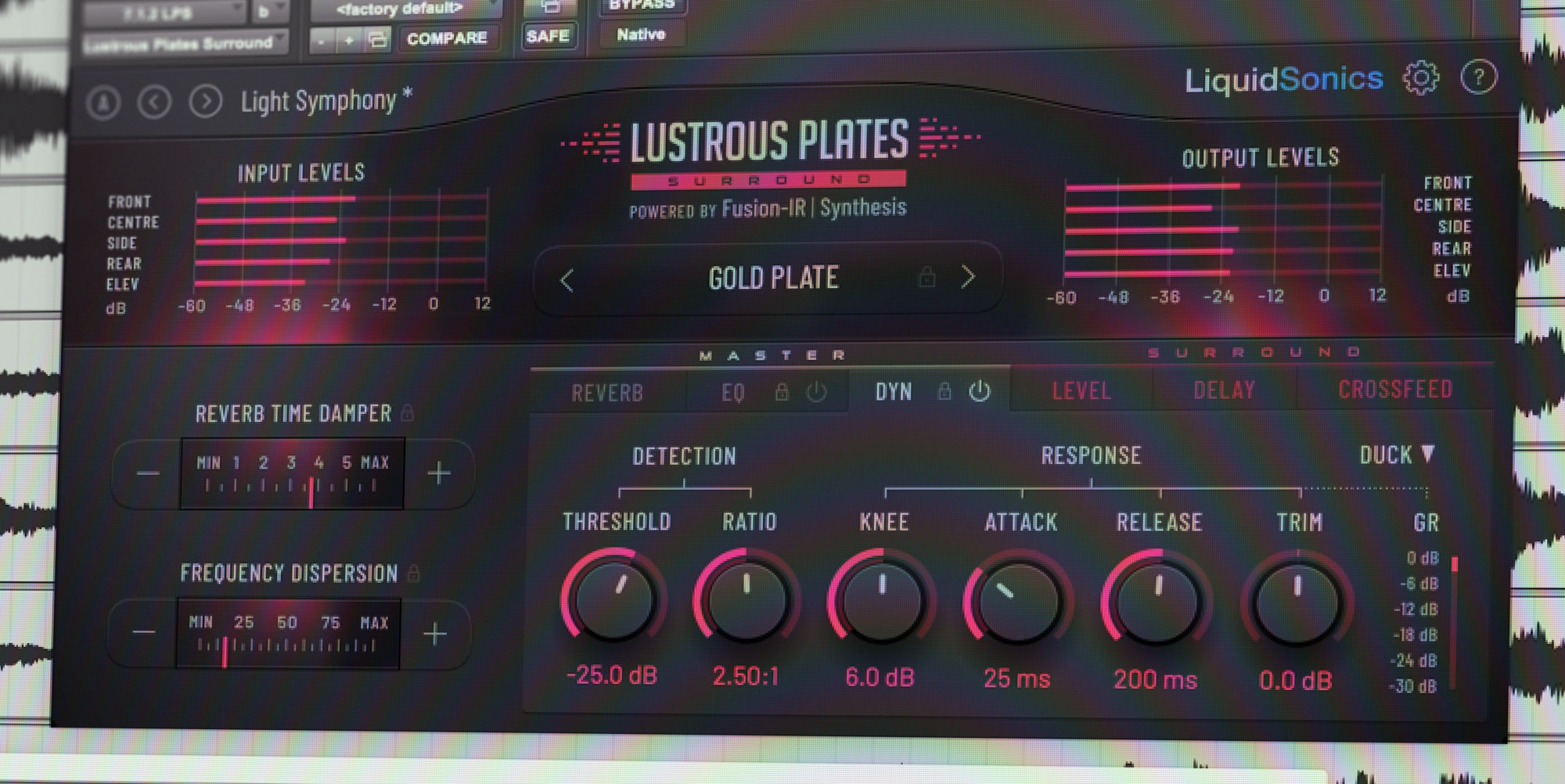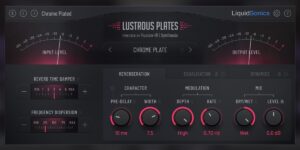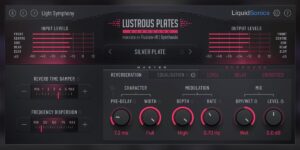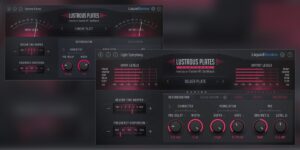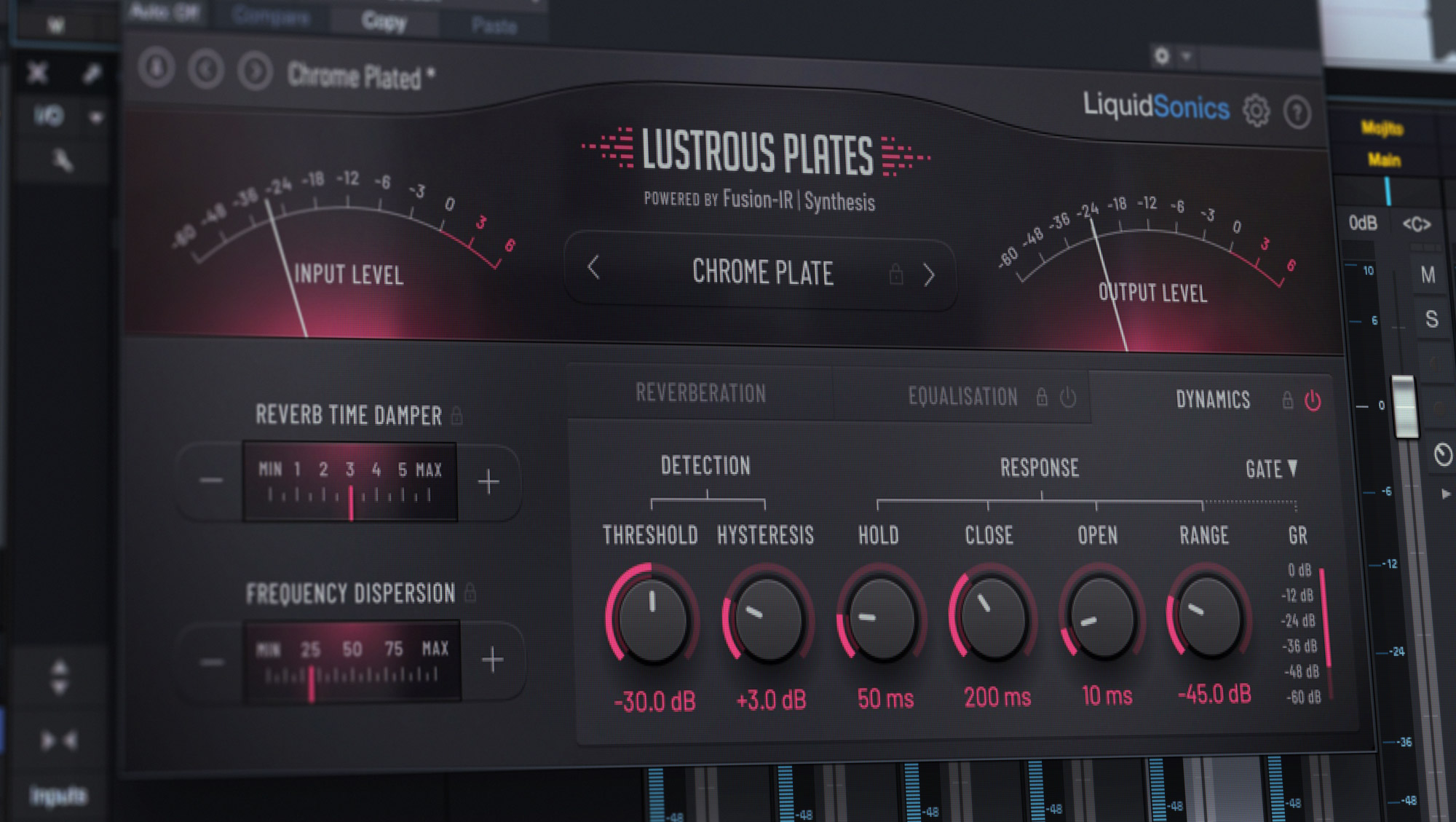
A new dynamics processor has been added to the latest Lustrous Plates and Lustrous Plates Surround v1.2 update.
The update is free to download now for all Lustrous Plates and Lustrous Plates Surround owners or you can pick up a free 14-day demo to try it now. Slate Digital’s All Access Pass subscribers will find the update in their Slate Digital Connect download tool.
Overview
We’ve already added dynamics to several of our other reverb plugins. Our users will testify just how useful the features are to acheive results previously only possible using addtional external plugins and complex mix workflows.
While reverbs are essential to crafting depth, size, and dimension in a mix, they can sometimes interfere with clarity and vocal intelligibility. Plate reverbs in particular can require a bit more attention due to their very high density and fast onset when compared to other types of reverb. In a room or hall, the reflections of the reverb are of a lower density which provides more space in the mix, but lush and thick plates can hit with a little too much weight.
The dynamics tab allows selection one of four modes of dynamics operation. You can select the current mode using the drop-down selector just above the gain reduction meter.
- Reverb ducking – a compressor after the reverb keyed on the input signal
- Reverb compression – a traditional compressor placed after the reverb
- Input compression – a traditional compressor acting before the reverb
- Gate – a processor to mute the signal when the reverb drops below a threshold
Gate
Gate effects are a staple of creative audio production, with especially interesting results on drums.
When the reverberated signal falls below the gate’s threshold it is reduced in gain by the number of decibels specified by the range control. This reduction happens after the pause time determined by ‘hold’, and takes the time to reach the level reduction determined by the ‘close’ time.
In the example shown in the header image, when the signal falls below -30 dB, the gate waits 50 ms before responding, and then reduces the signal by 45 dB over a period of 200 ms. When the signal exceeds the threshold plus the hysteresis amount (i.e. -30dB + 3dB = -27 dB in this example) the gate will re-open over the time period set by the ‘open’ parameter (10 ms in this example).
Compression and Ducking
Ducking a reverb is often used to avoid a reverb swamping the dry signal, allowing the verb to be tucked away until there is space in the mix for it to fill the space between phrases which typically is done to improve intelligibility.
In the compression modes (ducking, reverb compression and input compression) the output signal is reduced when it rises above the threshold value at a rate determined by the ratio. The knee controls how gradually that ratio is applied. Attack and release control how quickly the compression begins to act on the signal when it is above or below the threshold. A simple trim control is provided to allow level adjustments because a compressor can significantly affect gain.
Downloads
To get the update just install the full plug-in over the top of your existing installation.
Lustrous Plates v1.2.0: macOS | Windows
Lustrous Plates Surround v1.2.0: macOS | Windows
Important: Please ensure you have iLok License Manager v5.4 and up.
This release natively supports Intel and Apple Silicon Macs.

